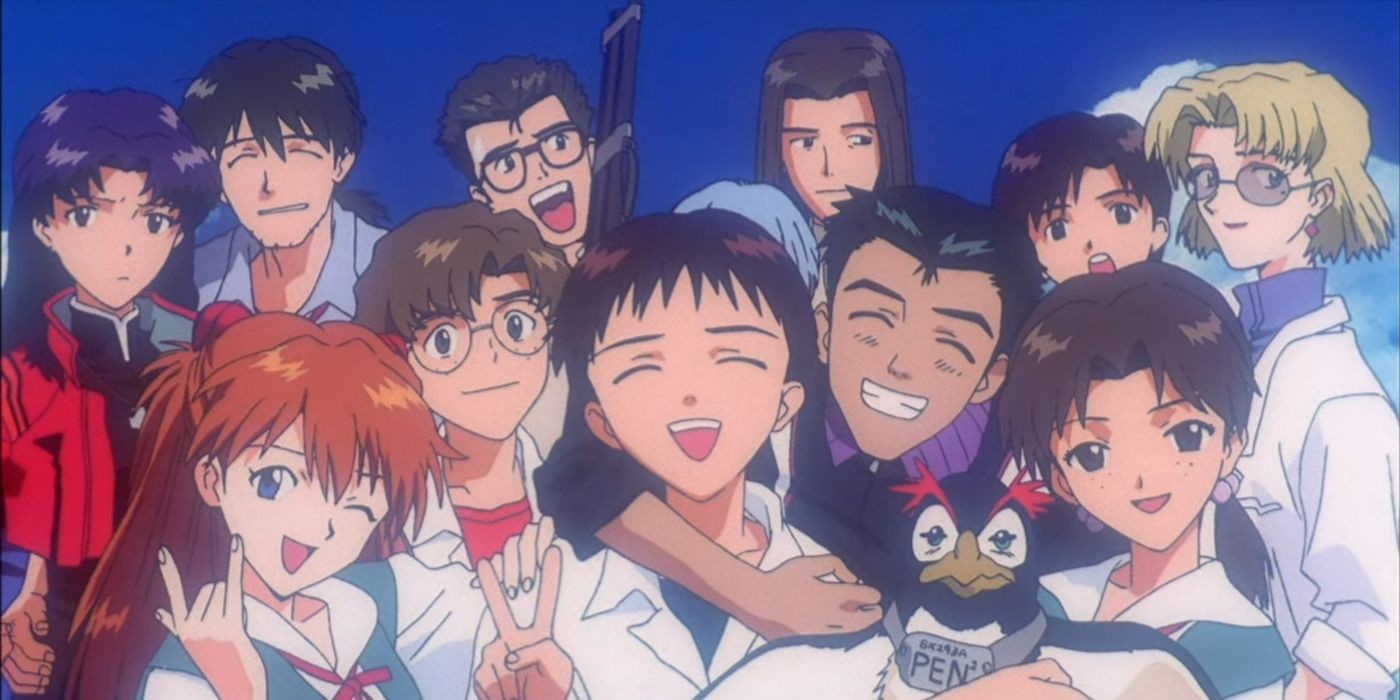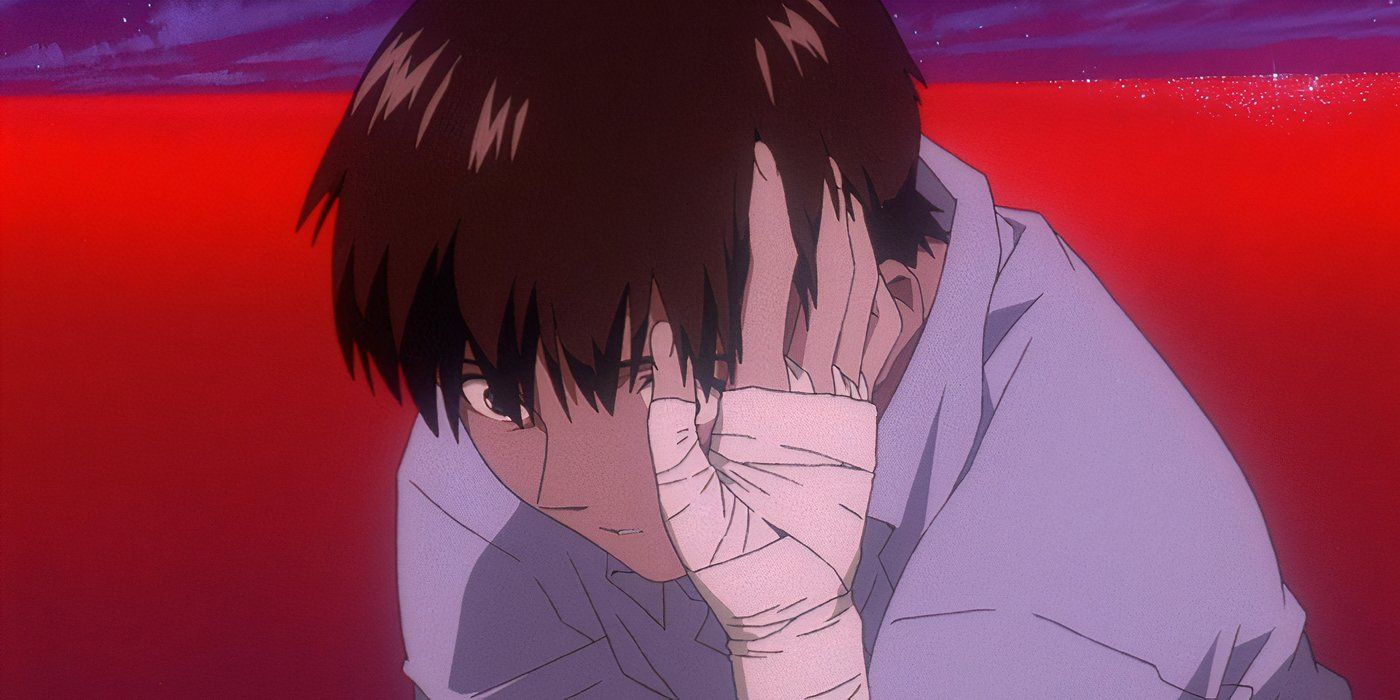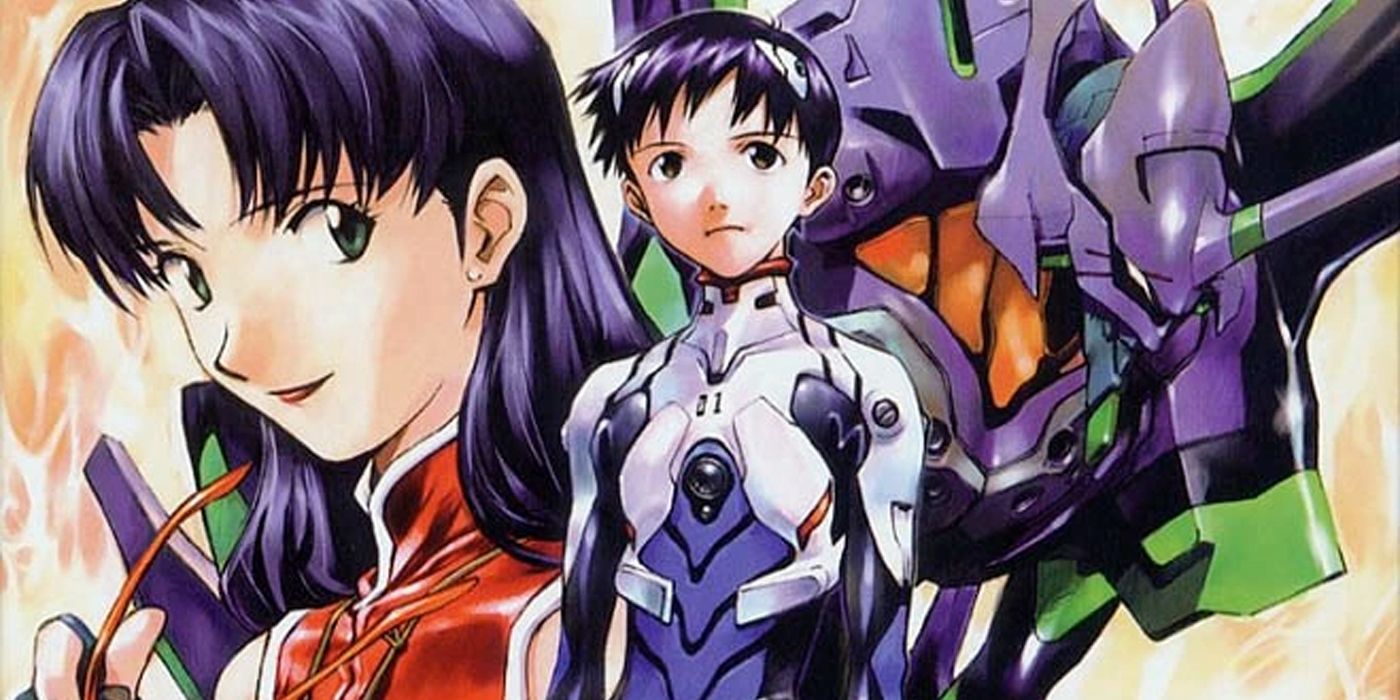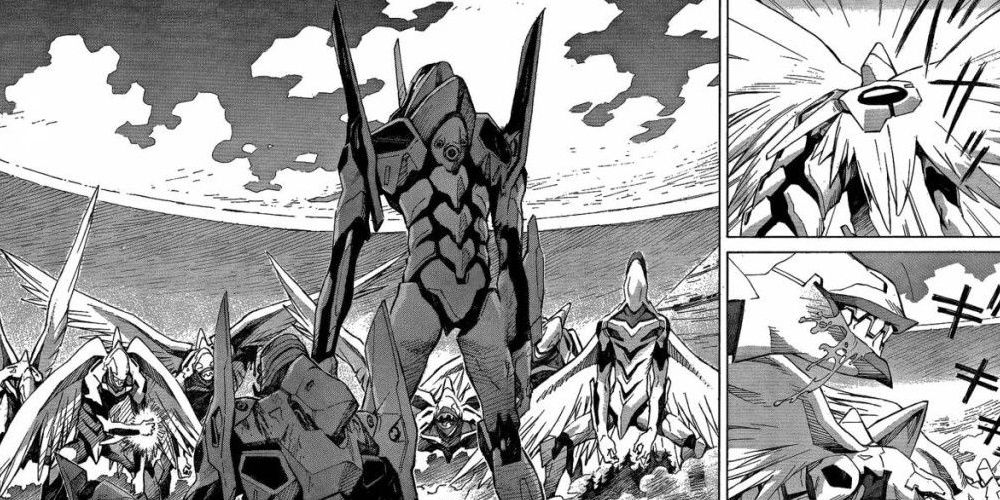Neon Genesis Evangelion is one of the most well-known anime of all time, and it’s regarded as a classic today because of how much it shook up the mecha genre. Far fewer fans, however, know about the manga version of Evangelion.
Evangelion was, of course, created as an anime series first, and a manga second, the opposite of most anime. That means the manga is based on the anime, and actually substantially expands on the events seen in the series, offering a clearer picture of the characters, their well-being, and the plot of the story as a whole.
But if Evangelion‘s anime is so popular and well-regarded, why isn’t the manga held to the same standard? Which version of the story is better, and how different do the two versions of the story actually get?
Evangelion’s Manga Was In Production for Years
The Evangelion Manga Was Finished Long After the Anime
The Neon Genesis Evangelion TV anime was broadcast from October 1995 to March 1996, covering the series’ full run of episodes. The Evangelion manga, on the other hand, began serialization in December 1994 to promote the upcoming TV series, and didn’t end until July 2013, giving it an absurdly long run compared to the original anime.
Despite that long run, however, the story is only about 96 chapters (with one bonus chapter). The production of the manga was plagued with delays; while volumes 1-3 came out before the anime debuted, volume 4 wasn’t released until after the entire anime had finished airing, and the story would sometimes go years without a release.

Related
I’ll Admit It: I Don’t Understand Why Neon Genesis Evangelion Is Still So Popular
Neon Genesis Evangelion is one of the most successful franchises in anime history, but its continued success, though deserving, is puzzling.
The Evangelion manga was crafted by Yoshiyuki Sadamoto, and according to the man himself, he had very little contact with Hideaki Anno or any of the other creatives behind Evangelion‘s anime once the manga began. As such, he regards the manga as a separate work, rather than an expansion of the anime.
As a result, Sadamoto does portray some events differently in the manga than how they played out in the anime, and the manga has its own distinct ending, different from either the end of the TV series or End of Evangelion (although it does adapt some material from that film). These changes may be bad, or good, depending on personal perspective.
What Makes Evangelion’s Manga So Different
Evangelion’s Manga Makes Some Significant Changes
The Evangelion manga begins to diverge from the series rather quickly. Some of these changes are quite major, such as the fourth child, Toji Suzuhara, being killed rather than badly injured after his EVA is taken over by an Angel. Perhaps the most significant change is Shinji coming to Asuka’s rescue when she fights the Mass Produced EVAs.
That kind of difference, however, comes about because the characters of the Evangelion manga are ever so slightly different in terms of personality and behavior. Shinji is less shy and depressed, and is far more aggressive when in the EVA than he is in the anime. Asuka is more mature and less bratty, although she can still be quite mean.

Related
It’s Been Long Enough: Neon Genesis Evangelion’s Biggest Problem Was Never Shinji
Evangelion is one of the most popular anime franchises ever, but its main protagonist has been receiving undeserved hate for decades.
Other big differences include a much earlier appearance by Kaworu Nagisa, a character who only appeared in the last episode before the finale of the anime. Kaworu would similarly have an expanded role in the Rebuild of Evangelion movies, becoming a major character throughout the third movie.
The series also omits some events, skipping over five entire Angel attacks to focus more on the important moments. Ryoji Kaji, Misato’s on-again off-again paramour, is also given a substantially expanded backstory, which he reveals in order to motivate Shinji. While Sadamoto did help work on the Rebuild films, he insists the manga is unconnected.
There’s Far More Than One Evangelion Manga
The Series Has Had Numerous Spinoffs and Alternate Retellings
While Sadamoto’s Evangelion is more of a direct adaptation, despite all the differences, there are a number of other Evangelion manga series out there which take very different approaches to the source material. Quite a few of them are set in alternate universes or depict substantially changed versions of events, such as Angelic Days or Campus Apocalypse.
Angelic Days is a spin-off manga by Fumino Hayashi which depicts the alternate universe seen during the Instrumentality sequences at the end of the series. It’s primarily set in a high school and would best be classified as “romantic comedy,” making it a radically different interpretation. The EVAs and Angels do still play a role in the story, however.
Campus Apocalypse by Ming Ming is, similarly, set in a school, but is actually a radically different interpretation, with very unique portrayals of the EVAs and Angels.
Campus Apocalypse by Ming Ming is, similarly, set in a school, but is actually a radically different interpretation, with very unique portrayals of the EVAs and Angels. In this version, EVAs are manifestations of willpower which few people are capable of. Kaworu is a major character in this version, appearing early and having a substantially different backstory.
The Shinji Ikari Raising Project is a manga by Takahashi Osamu based on a video game of the same name. It portrays Shinji and Asuka as childhood friends, Shinji’s mother is still alive, and his relationship with his father is less abusive and more competitive in nature. It shares some commonalities with Angelic Days with a school setting.
There’s also the light novel series, Neon Genesis Evangelion: Anima, which takes place in an alternate universe set three years after the main series, where events diverged by having Shinji stop Instrumentality during End of Evangelion. It features Mari Makinami from the Rebuild movies as a child, as well as several new clones of Rei.

Related
Neon Genesis Evangelion Announces Huge 30th Anniversary Celebration, But There’s a Catch For Many Fans
Neon Genesis Evangelion is celebrating its 30th anniversary in the biggest way possible, but there is a major catch for most fans of the franchise.
Finally, there’s a parody series known as Petit Eva: Evangelion@School, which features a number of bizarre changes, such as Unit-01 being human-sized and attending school alongside Shinji, Rei, and Asuka. This manga was popular enough to receive an animated adaptation of shorts.
Many of these Evangelion spin-offs are implied to take place in an Evangelion multiverse, meaning most of them are “canon” to some extent. They all show different facets of the characters, and by reading them, one can gain a far better appreciation of the characters. Neon Genesis Evangelion is truly a far more massive franchise than most fans know.




